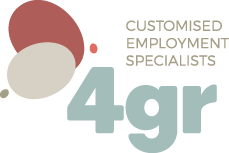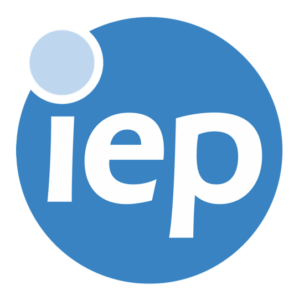
By Beth Evans FIEP, Director, 4gr & Gillian Baldwin FIEP, Director, 4gr
Language shapes our workplace culture, and the words we choose can either foster inclusion or create division. When we speak about or to people living with a disability, our language is essential in making sure they feel respected, valued, and fully included in the workplace.
Person-Centred Language: Asking How People Want to Be Described
Inclusive, person-centred language ensures that we see the individual first, rather than focusing on their disability. A critical aspect of this is asking the person how they want to be described. According to the Australian Network on Disability (AND) and the Disability Advocacy Resource Unit (DARU), asking individuals how they prefer to be addressed is a key part of inclusive communication (Australian Network on Disability, 2023). This demonstrates respect for their autonomy and acknowledges their identity.

Some may prefer ‘person with a disability,’ while others might prefer ‘disabled person’ or another term entirely. The key is letting them lead the conversation so that our language aligns with their preferences.
Why Jargon and Non-Inclusive Language are Problematic
Using technical jargon or language that excludes those with different abilities creates barriers that go beyond simple confusion. In a workplace, jargon can alienate individuals, particularly those living with a disability, by making them feel excluded from conversations. This can lead to a workplace culture where individuals feel isolated or undervalued, whether or not this is the intention.
Research from the Centre for Workplace Inclusion emphasises that non-inclusive language can perpetuate harmful stereotypes, leading to isolation and disengagement (Workplace Inclusion Centre, 2022). Non-inclusive language, like using outdated terms or making assumptions about someone’s abilities without asking, can make people feel ‘othered’—separate or different from their peers (Disability Advocacy Resource Unit, 2023).
Leadership: Walking the Walk and Talking the Talk
Leaders play a crucial role in setting the tone for inclusive behaviour. As highlighted by the Centre for Creative Leadership, inclusive leadership is about taking consistent actions that align with the values of diversity and inclusion (Centre for Creative Leadership, 2023). This means consistently using person-centred language, asking individuals how they prefer to be described, and embedding these practices into workplace culture.
Walking the walk means modelling this behaviour daily—actively showing respect, listening to people’s preferences, and being mindful of how your words affect others. Talking the talk means using every opportunity, in meetings, emails, or casual conversations, to reinforce inclusive language. When leadership embodies these values, it sets the tone for the entire organisation, creating an environment where inclusivity isn’t just an abstract idea but a lived reality.
The Wider Impact: Isolation and Reduced Value
When people living with a disability encounter non-inclusive language repeatedly, it doesn’t just affect them personally—it can shape how they view their role within the organisation. Feeling excluded or misunderstood can lead to disengagement, reduced productivity, and eventually, a sense of isolation from the rest of the team. This is why asking someone how they wish to be described is more than a courtesy; it’s a key part of ensuring that they feel like a full and valued participant in the workplace.
People living with a disability who experience non-inclusive language can feel undervalued. As per the work of the Disability Discrimination Act 1992, creating an inclusive workplace is legally and ethically crucial to avoid discrimination and ensure equity in the workplace (Australian Human Rights Commission, 2023). For neurodivergent individuals, the impact of assumptions and exclusionary language can be even more profound, making leadership’s role in modelling inclusivity even more essential.
What You Can Do to Promote Inclusivity:
- Ask First: Always ask individuals how they want to be described. Respecting their preferences is a powerful way to promote inclusion (Disability Awareness, 2023).
- Use Person-Centred Language: Focus on the individual before their disability, but only in ways that align with how they want to be identified.
- Walk the Walk, Talk the Talk: Leadership must show the way. Model inclusive language in every interaction and encourage others to do the same (Centre for Creative Leadership, 2023).
- Avoid Assumptions: Don’t make assumptions about abilities based on a person’s disability. Ask questions and be open to learning.
- Keep Jargon to a Minimum: Avoid exclusionary language that might confuse or alienate others. Make communication clear and accessible.
- Encourage Open Dialogue: Foster a safe environment where people feel comfortable sharing when language makes them feel excluded. This builds a culture of continuous learning and growth (Disability Rights UK, 2022).
The Way Forward
Inclusive language is not just about preventing harm—it’s about ensuring that everyone, including people living with a disability, feels that they truly belong. Leaders play a vital role in shaping this culture by modelling inclusive behaviours and ensuring that language reflects respect and understanding. By making small changes in how we communicate and consistently walking the walk, we create a workplace where every individual feels seen, heard, and valued.
References:
- Australian Network on Disability (2023). Inclusive Communication. https://www.and.org.au/inclusive-communication
- Centre for Creative Leadership (2023). What Inclusive Leaders Do. https://www.ccl.org/articles/leading-effectively-articles/what-inclusive-leaders-do
- Disability Awareness (2023). Inclusive Language Guide. https://www.disabilityawareness.com.au
- Disability Rights UK (2022). Inclusive Language and Communication. https://www.disabilityrightsuk.org
- Australian Human Rights Commission (2023). Disability Discrimination Act 1992. https://www.humanrights.gov.au/our-work/disability-rights

